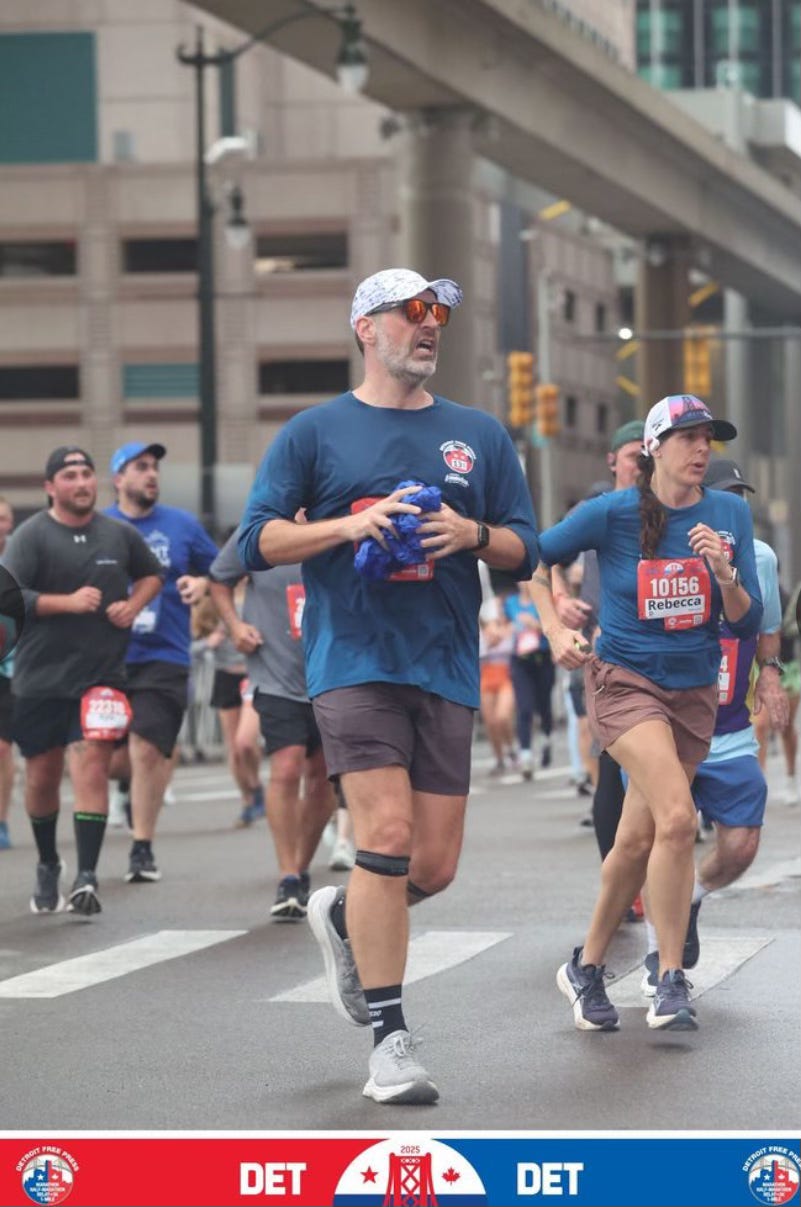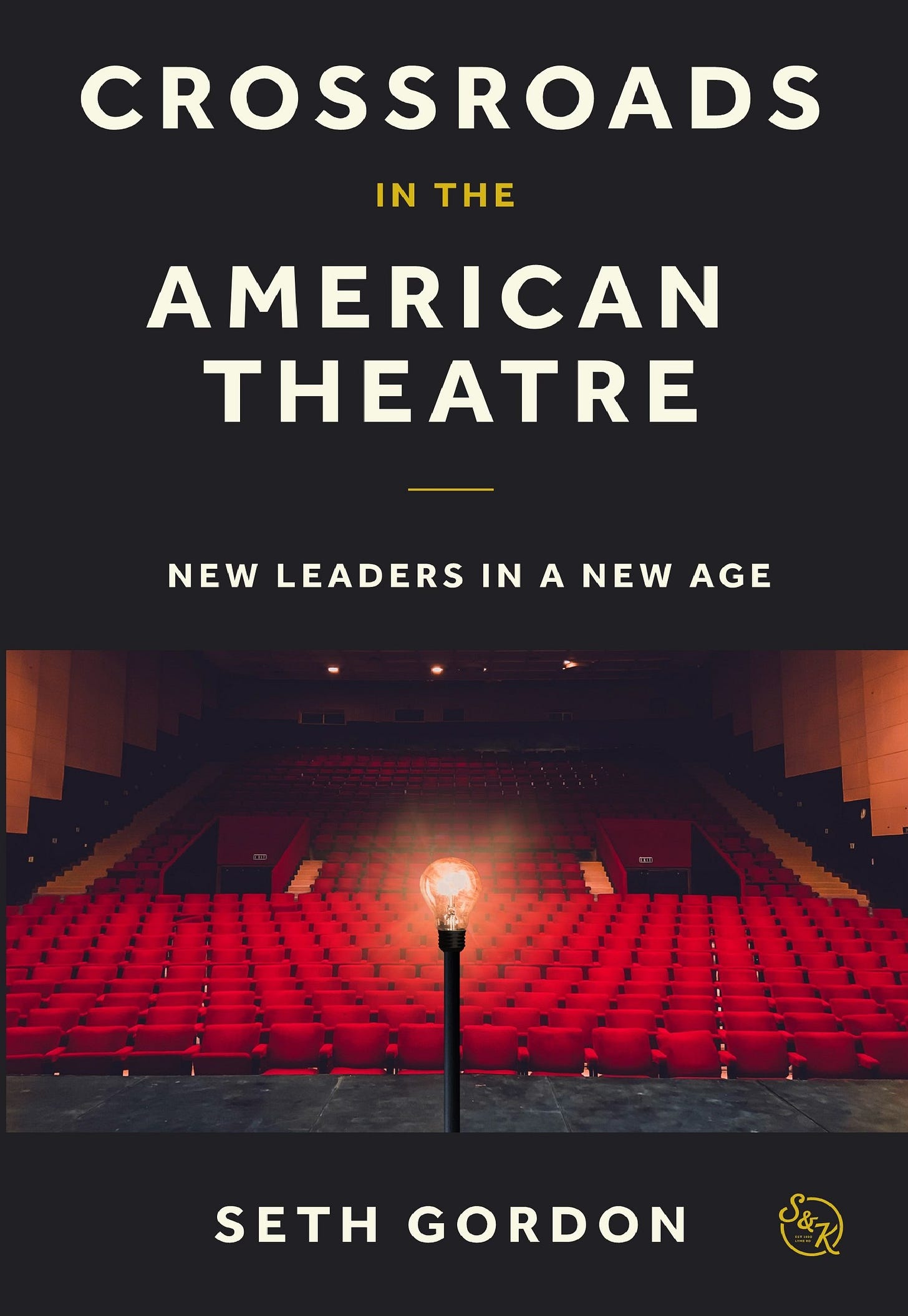Worst. Parade. Ever.
Tips, tricks, inspiration, and encouragement for storytellers of all stripes
Greetings from Sarasota—
I ran south into Canada.
See, the Detroit Free Press International Half-Marathon had its 48th running last Sunday, and the geographical quirkiness of the Detroit River meant we ran over the Ambassador Bridge south into Windsor, Canada.
We returned north into Michigan via a tunnel. The only underwater marathon mile in the world, I believe.
All told, some twenty-six thousand runners from 30 countries participated in the various races over the weekend—5K, half, full. That’s twenty-six thousand stories. The how and what and why of all these people putting their bodies and minds through joyful agony and agonizing joy.
The spectators were out in full force, defying the gusting wind and on-again-off-again drizzle, making noise and holding up homemade bits of marker-on-cardboard encouragement.
My three favorite signs…
You trained for this race. I made this sign. We’re both heroes.
And…
Worst parade ever.
And…
1 in 1000 marathoners poops their pants while running. Are u that 1?
Thankfully, I was not. But at 1 per 1000, that means a couple dozen folks had, shall we say, a squishy race.
Talk about a story…
The winner of the men’s full marathon? He won last year, too! Back-to-back victories. This year, though, he got to kiss his three-week old son at the finish line.
He also finished his full marathon in ten fewer minutes than I finished my half.
Yeah, sure, wow, but I can’t help but turn that impressive fun fact into a Rocky Balboa-styled training montage in my head. The investment of time and intention. Even as a newborn came gurgling into his life.
We saw his picture in the paper. Sweaty and elated. Wife and baby. But that’s only one tiny piece of his story.
Stories are invisible until they are seen. Silent until they are told.
Stories are built with heel-crunching steps, day in and day out.
Elation filled that moment when he zipped across the finish line—no one in front, twenty-six thousand behind—only because of the hundreds of thousands of steps that came before. Not in the race itself. But in the training.
Like I talked about last week: the real story is the struggle.
This week, my race is over. This particular batch of training is finished. The beautiful medal hangs above my desk. Just as twenty-six thousand other medals hang in twenty-six thousand other places of honor around the world.
Our medals are all the same. But each represents a singular story.
We all ran the same route. But in our own way, and in our own time.
For Rebecca’s cousin Allison, it was her tenth full marathon. For Rebecca’s sisters Emily and Sarah, it was their first ever half, and I am so dang proud of them!
One race. So many stories.
I look at my medal, and I see not only the finish line, but the flight to Michigan. The training calendar on the fridge. The guy at Fleet Feet selling me energy gummies. The careful driving plans I wrote out to make sure we found parking without dead-ending into streets closed off for the race route. I hear Rebecca on the phone with Emily, swapping training times and distances over the last several months. The alarm going off at four in the morning on race day. The whistle of the wind at the top of the Ambassador Bridge. The echoing chant of “Jared Goff! Jared Goff!” reverberating in the tunnel.
That medal contains months and multitudes of memories.
So often in classes or workshops I’ll hear students worrying about their story not being big enough, their lives not being interesting enough.
Nonsense. There is no such thing as an ordinary life. You don’t have to win back-to-back marathons to produce an awesome story. You just have to run.
Look around. What “medals” do you have displayed?
There are stories inside every one—and everyone—just waiting to be told.
CROSSROADS has dropped
You may recall that friend of the Page&Stage Podcast Seth Gordon had a new book coming out.
And now—oh yes—come out it has!
Here’s the blurb:
The American theatre is at a crossroads. After a worldwide pandemic and social reckonings that took place just before and around the pandemic, the way non-profit theatres lead their institutions and produce their plays are being reexamined almost from scratch. Are we headed in the right direction? Many of these theatres are post-pandemic, experiencing declines in subscriptions and overall viewerships that are imperiling their existence. How might they stop this slide? Do they need a whole new approach to how they fit into their communities? Crossroads in the American Theatre examines these questions and more through interviews with leaders of major non-theatres throughout the United States. They contemplate these questions, along with the main one: What do we do from here?
And to hear Seth talk more about the book and all things theatre, check out my podcast convo with him from earlier this year—
Be sure to comment or hit me up with any questions/comments/complaints, thanks as always for reading, and have a great weekend—
Jason “Non-Poopy Pants” Cannon




